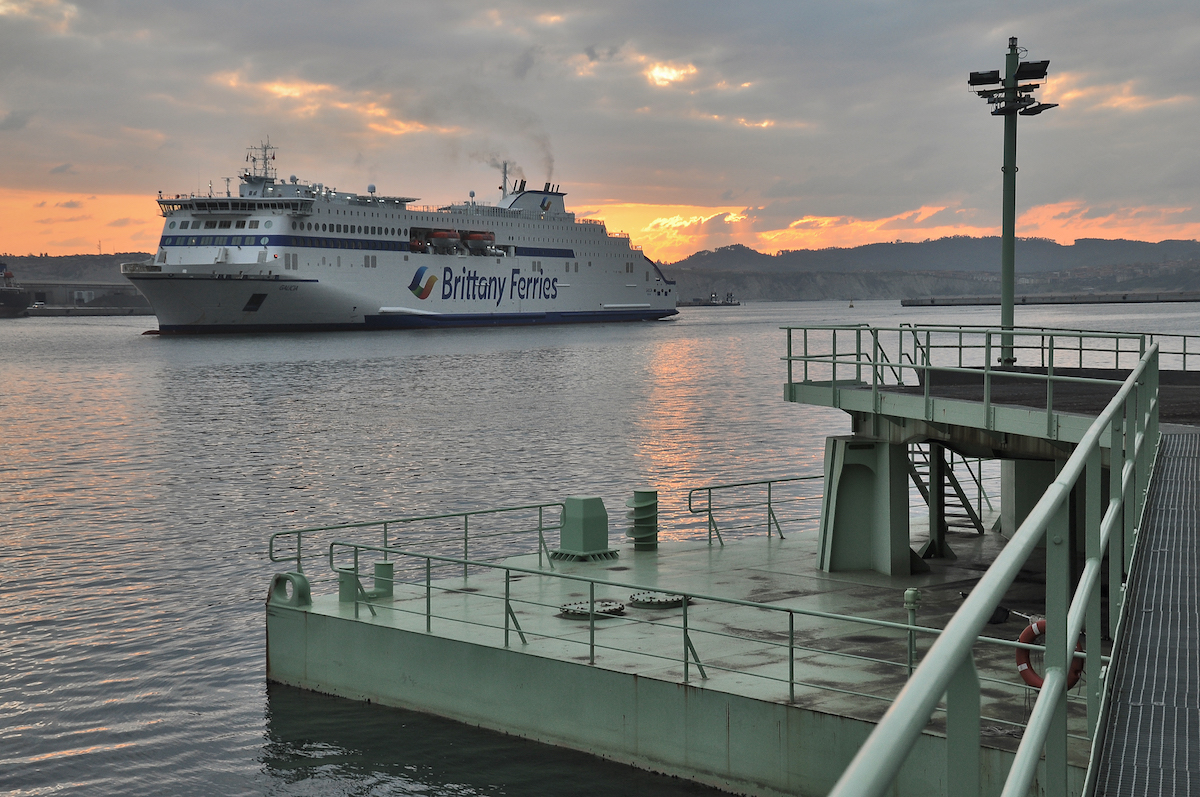The new ferry, set to service the route connecting the UK with Spain, will be more efficient and environmentally friendly, with a 46% saving in CO₂ emissions per passenger, a 10% increase in passenger capacity and a 28% increase in cargo space.
Brittany Ferries’ vessel Galicia has returned to the Port of Bilbao to continue with the trials required in preparation for the arrival in 2022 of the “Salamanca”, the sister ship of the Galicia and the French company’s most modern vessel.
The Salamanca, which will operate the long-distance routes between Spain and the United Kingdom, will run on liquefied natural gas (LNG), and will therefore be a more efficient and environmentally friendly vessel. To prepare for its arrival, the Port Authority is currently carrying out refurbishment work at the berth, and Repsol is building a quayside LNG filling station.
LNG is a fuel that emits virtually no sulphur dioxide, nitrogen dioxide or particulate matter on combustion. Furthermore, it burns more efficiently than diesel, leading to a comparative reduction of around 25% in the production of CO₂.
The Salamanca will be Brittany Ferries’ first gas-powered vessel to operate in the Port of Bilbao, to be joined in 2023 by the Santoña. The 42,000 ton capacity ferry, 215 m in length, will be one of the largest vessels the company has ever operated and the longest in the fleet. Equipped to accommodate up to 1,015 passengers, the vessel will have a little over 2.7 km of lane space for passenger vehicles and lorries. In addition, it will offer significant savings in fuel consumption and emissions, a 10% increase in passenger capacity and a 28% increase in cargo space.
E-flexer vessels, such as the Salamanca, promise a significant reduction in greenhouse gas emissions. Furthermore, they are lighter, quieter and benefit from less vibration, enabling better handling and a smoother sea passage.

In constructing these vessels, particular attention has been paid to fuel efficient propulsion plants and long, slender hull and bow design. Friction-reducing silicon paint coating the underwater hull further reduces fuel consumption, while propeller and rudder design enables improved manoeuvrability, all of which is designed for greater efficiency and to bring about a significant reduction in the vessel’s carbon footprint.
All these changes will bring about an estimated saving of around 46% in CO₂ per passenger compared to the current vessels on the company’s long-haul routes.
Commitment to the energy transition
In the words of Roberto Castilla, Director of Brittany Ferries in Spain: “We are carrying out the last technical tests with the vessel Galicia to prepare for the arrival of the “Salamanca” in Bilbao in the spring of 2022. We are committed to sustainable development and particularly to LNG, which offers major environmental advantages as it reduces atmospheric pollutants and greenhouse gas emissions. We consider LNG a key fuel in the energy transition, which is why we are working with the Port Authority of Bilbao and Repsol to meet the requirements for bunkering LNG to the “Salamanca” during its calls at the port of Bilbao from 2022 onwards”.

 Port access
Port access